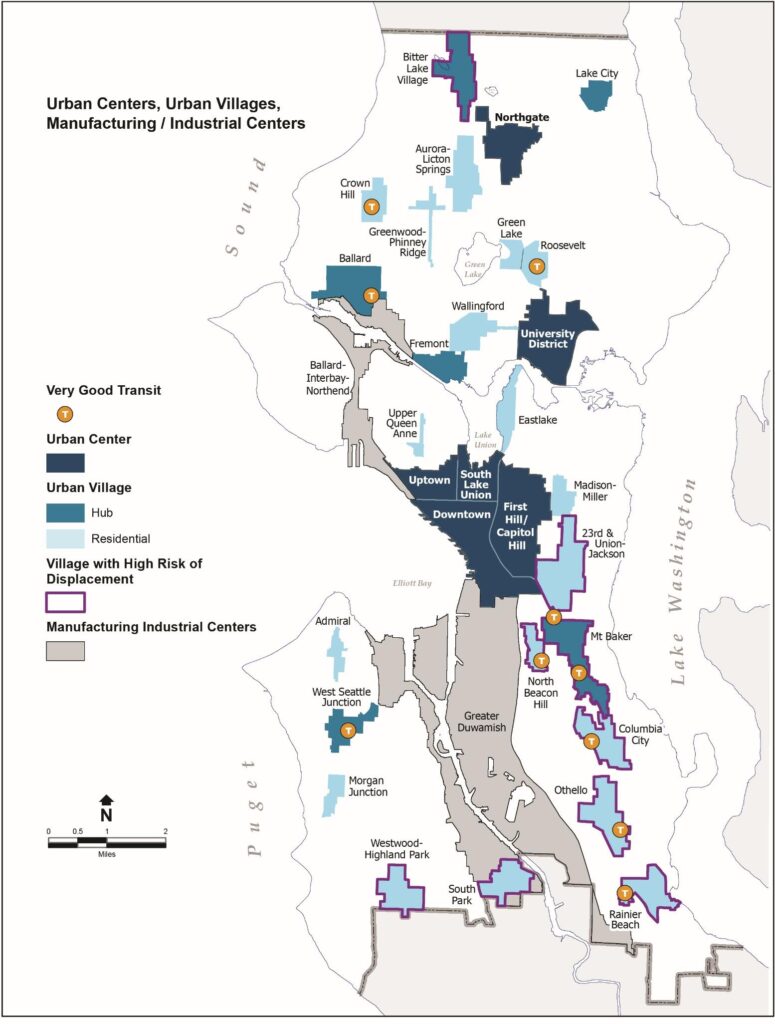June 6, 2020
Seattle’s Urban Village Strategy (1994)

Part of the Central District has been designated as an Urban Residential Village to help absorb growth in response to Washington’s Growth Management Act.City of Seattle
In response to the Washington State Growth Management Act of 1990, Seattle adopted a number of Urban Village designations across the city to create zones that would absorb the majority of population growth in the coming years. In the Central District, an area referred to as 23rd & Union-Jackson was designated as a residential urban village, intended for residential development around a commercial core. While bringing additional transportation, commercial uses and economic development to the area, the urban village designation also forces the area to develop rapidly.
A look at the map of Seattle’s designated urban villages makes it clear that some neighborhoods are set up for more sweeping changes than others. If you compare the outline of the Greenwood-Phinney Ridge Urban Village to the 23rd & Union-Jackson outline, you can see a stark contrast. Wealthy white homeowners in Greenwood used their bargaining power with the city and successfully reduced the proposed growth area, leaving their neighborhoods largely unchanged. Meanwhile, the 23rd & Union-Jackson outline covers a large area of the Central District neighborhood.
Resource: Eliason, Mike. “Urban Village Boundary Contractions? No Thanks.” The Urbanist (blog), August 15, 2018. https://www.theurbanist.org/2018/08/15/urban-village-boundary-contractions-no-thanks/.
